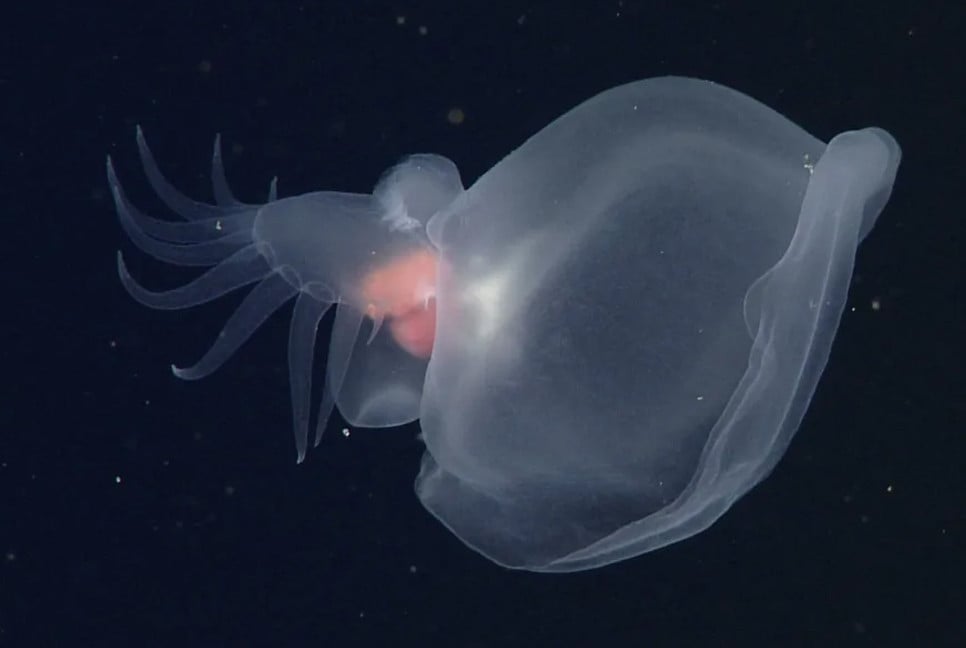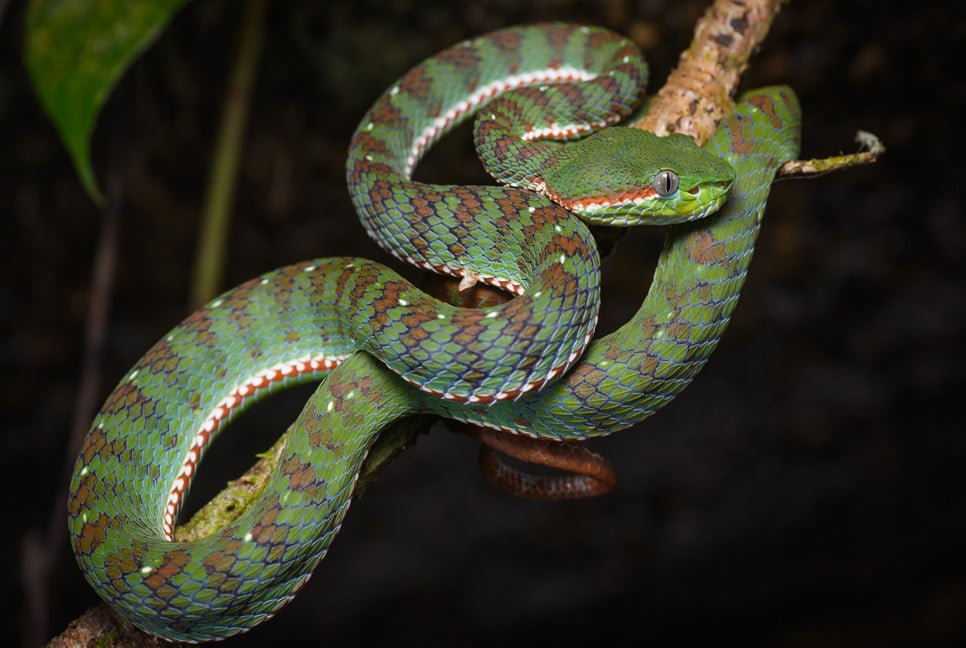Scientists have discovered a new type of glowing sea slug in the ocean's "midnight zone," which is located 3,300 to 13,100 feet below the surface. It’s named ‘Bathydevius caudactylus’, this apple-sized creature is unlike any other sea slug. Unlike most sea slugs that live on the seafloor, ‘Bathydevius’ is the first nudibranch species found to swim freely in the deep ocean.
Discovered in 2000 by researchers from the Monterey Bay Aquarium Research Institute (MBARI), ‘Bathydevius’ has a unique paddle-like tail, a large gelatinous hood, and exhibits bioluminescence. It uses this glowing ability to distract predators and aid in capturing prey, such as shrimp, which it traps using its hood. The species is also capable of shedding glowing projections from its tail to confuse threats, a tactic similar to how some lizards can shed their tails as a defense mechanism, reports CNN.
Unlike most sea slugs, which rely on a raspy tongue to scrape food from the seafloor, ‘Bathydevius’ floats through the water, using its flexible body to engulf its prey. Researchers believe this adaptation allows it to survive in the cold, dark waters of the midnight zone—one of the most extreme environments on Earth.
The creature’s glowing display is not only visually stunning but also raises intriguing questions about bioluminescence in deep-sea species. While bioluminescence is common among many ocean creatures, ‘Bathydevius’ is one of only a few sea slugs to display this trait, suggesting a unique evolutionary development.
The discovery, published in ‘Deep Sea Research Part I’, sheds light on the mysterious and largely unexplored midnight zone, which accounts for 70% of the world's ocean. However, ‘Bathydevius’ and other deep-sea organisms face threats from activities like deep-sea mining, which could disrupt their fragile ecosystem. Researchers stress the importance of further study to protect this vital and awe-inspiring part of our planet’s oceans.
Bd-pratidin English/ Afia































































